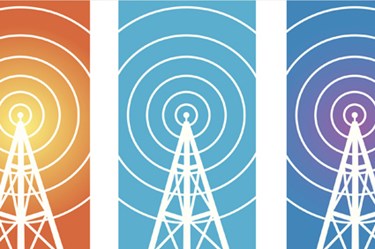The Week In 5G: 2/16/2018 – 5G Debuts At Winter Olympics, UK's Spectrum Auction To Go Ahead
By Jof Enriquez,
Follow me on Twitter @jofenriq

The world's largest showcase of 5G technology got underway at the PyeongChang Winter Olympic Games in South Korea this week. Several 5G use cases are being demonstrated at the Games, ranging from driverless shuttles and ultrafast video streaming to wildlife management.
South Korean operator KT Corp. demonstrated the potential of 5G by streaming ultrafast live video from cameras mounted on zooming bobsleds, and showing different angles of figure skaters as they performed their routines. Guests outside Olympic venues view the action while riding 5G-guided, self-driving shuttle buses with interior video screens for windows. Interestingly, spectators and athletes are protected from wild boars roaming around the area using "fast-acting systems that shoot rays, spew gases and emit tiger roars," reported Bloomberg.
“The technology has great promise to enable new types-of-use cases,” said Chris Lane, a Hong Kong-based analyst at Sanford C. Bernstein & Co.
KT Corp. partnered with Intel, Ericsson and Samsung on the development and deployment of the showcase, which will allow the companies to gather information to work out the kinks ahead of a full commercial launch of 5G in South Korea next year.
Huawei was not part of the Olympic 5G showcase, but is busy developing its own 5G technology, nevertheless. Together with Telus, it is conducting a 5G wireless-to-the-home (WttH) trial service using a specially-designed 5G customer premise equipment (CPE) unit in Vancouver, Canada. The trial that started in December is based on millimeter wave tests that the two companies first tested in June 2017, and has achieved single-user download speeds of over 2 Gbps, according to RCR Wireless.
Since November last year, Huawei also has been conducting 5G trials with Canadian operator Bell.
However, Huawei is seemingly being locked out of the U.S. market, amid persistent fears that its devices pose a cybersecurity risk to U.S. citizens and institutions. During a U.S. Senate Intelligence Committee hearing this week, intelligence officials expressed "deep concerns" over risks posed by devices made by foreign companies.
Senate Intelligence Committee chairman, Republican senator Richard Burr of North Carolina, singled out Chinese companies, saying, “The focus of my concern today is China, and specifically Chinese telecoms companies like Huawei and ZTE that are widely understood to have extraordinary ties to the Chinese government,” reported Digital Trends.
In product news, telecommunications equipment and software provider Ciena unveiled a solutions package that will enable operators to run 4G and 5G networks simultaneously. The package includes programmable network-slicing capabilities, which the company will demonstrate at Mobile World Congress (MWC) in Barcelona later this month.
"4G and 5G networks will coexist for the foreseeable future and share the same wireline network infrastructure between cell sites as well as to and from datacentres, where accessed content is hosted," said the company, according to ZDNet.
Ahead of MWC, Qualcomm announced the Snapdragon X24 LTE modem for smartphones, which promises to deliver download speeds of up to 2Gbps. That’s twice as fast as the company’s previous gigabit LTE modem, reported The Verge.
According to Qualcomm, Snapdragon X24 supports up to seven carrier aggregation and 4x4 MIMO antenna arrays on up to five aggregated LTE carriers, which allow for a theoretical maximum of 20 concurrent LTE streams. This permits X24-equipped devices to connect to the entire range of spectrum bands available to carriers.
In deployment news, the United Kingdom's communications regulator Ofcom scored a legal victory when a ruling denied an appeal by telco firm Three to lower the cap on a 5G spectrum auction. Three had sought for Ofcom to set a maximum of 30 percent of the available 2.3GHz and 3.4GHz spectrum, instead of a planned 37 percent ceiling, claiming the government's proposal will stifle competition. Three's appeal reportedly had delayed the auction by more than six months, but the company said otherwise, claiming that UK consumers do not expect 5G services until 2019/2020.
"The Court of Appeal has very firmly rejected Three's application for permission to appeal on all grounds," said an Ofcom spokesman, reported The Inquirer. "We welcome this decision, and will now press ahead with releasing these important airwaves. This new capacity will allow mobile companies to offer more reliable reception, and to prepare for future 5G services."
